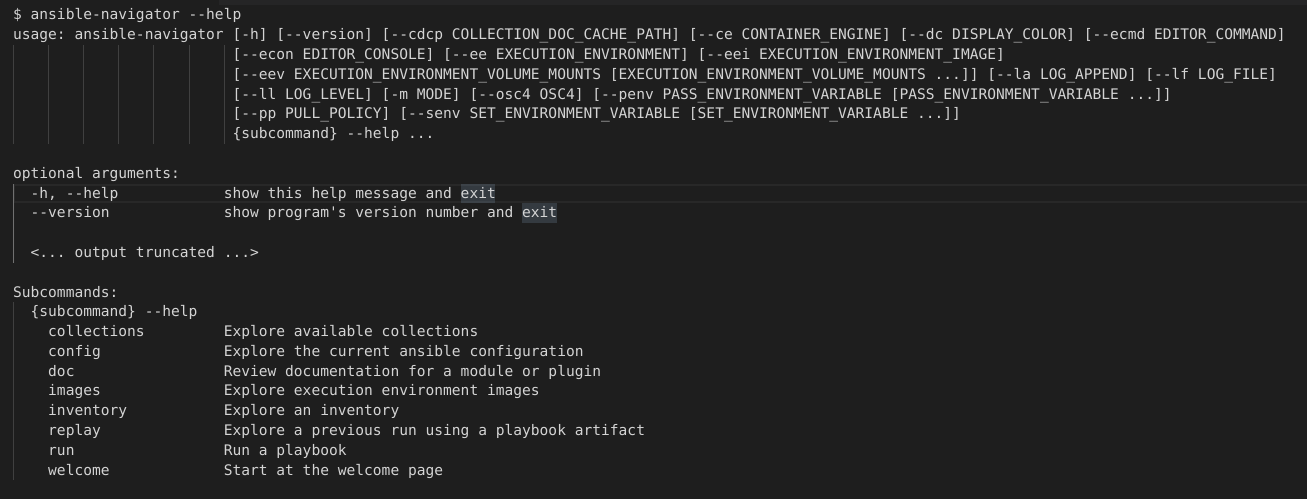Chapter 5. Setting up your development environment
You can follow the procedures in this section to set up your development environment to create automation execution environments.
5.1. Installing Ansible Builder
You can install Ansible Builder using Red Hat Subscription Management (RHSM) to attach your Red Hat Ansible Automation Platform subscription. Attaching your Red Hat Ansible Automation Platform subscription allows you to access subscription-only resources necessary to install ansible-builder. Once you attach your subscription, the necessary repository for ansible-builder is automatically enabled.
You must have valid subscriptions attached on the host before installing ansible-builder.
Procedure
In your terminal, run the following command to activate your Ansible Automation Platform repo:
$ dnf config-manager --enable ansible-automation-platform-2.1-for-rhel-8-x86_64-rpms
Then enter the following command to install Ansible Builder:
$ dnf install ansible-builder
5.2. Installing Automation content navigator on RHEL from an RPM
You can install Automation content navigator on Red Hat Enterprise Linux (RHEL) from an RPM.
Prerequisites
- You have installed RHEL 8 or later.
- You registered your system with Red Hat Subscription Manager.
Procedure
Attach the Red Hat Ansible Automation Platform SKU.
$ subscription-manager attach --pool=<sku-pool-id>
Enable the repository for RHEL 8.
$ sudo subscription-manager repos --enable ansible-automation-platform-2.1-for-rhel-8-x86_64-rpms
Install Automation content navigator.
$ dnf install ansible-navigator
Verification
Verify your Automation content navigator installation:
$ ansible-navigator --help
The following example demonstrates a successful installation:

5.3. Downloading base automation execution environments
Base images that ship with AAP 2.0 are hosted on the Red Hat Ecosystem Catalog (registry.redhat.io).
Prerequisites
- You have a valid Red Hat Ansible Automation Platform subscription.
Procedure
Log in to registry.redhat.io
$ podman login registry.redhat.io
Pull the base images from the registry
$ podman pull registry.redhat.io/aap/<image name>

